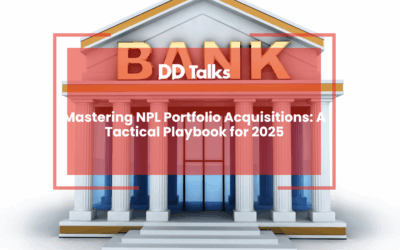Understanding Distressed Debt and Investment Opportunities in 2024
Distressed debt refers to securities of companies or government entities facing financial difficulties, often trading at significant discounts. These investments present both risks and substantial returns, making them intriguing for experienced investors. As we look towards 2024, several distressed debt funds and strategies are worth watching.
How to Profit from Distressed Debt?
Profiting from distressed debt involves purchasing debt at a lower price, anticipating that the value will increase as the financial situation of the issuer improves. Investors need to conduct thorough research and risk assessment. Strategies include:
- Identifying undervalued debt with potential for recovery.
- Engaging in negotiations for debt restructuring.
- Speculating on the company’s turnaround or liquidation values.
What is Stressed and Distressed Debt?
Stressed Debt typically refers to debt that is experiencing financial pressure but has not yet defaulted or entered bankruptcy. These securities are often marked by:
- Financial Strain: The issuer may be facing financial difficulties, such as declining revenues, increasing expenses, or other operational challenges.
- Higher Yields: Due to the increased risk, stressed debt usually offers higher yields to attract investors.
- Potential Recovery: There remains a possibility that the issuer can recover and continue to meet its debt obligations without defaulting.
Distressed Debt, on the other hand, refers to securities that are either already in default or have a high likelihood of defaulting soon. Characteristics of distressed debt include:
- Severe Financial Trouble: The issuer is in severe financial distress, often indicated by missed interest payments, covenant breaches, or significant operational problems.
- Default Risk: These securities have a high probability of defaulting, and the issuer may be undergoing or nearing bankruptcy proceedings.
- Discounted Prices: Distressed debt is often traded at significant discounts to its face value, reflecting the high risk and potential for substantial losses.
Key Differences
- Severity of Financial Condition: Stressed debt is under financial pressure but not in immediate danger of default, whereas distressed debt is at or near default.
- Risk Levels: Stressed debt carries moderate risk, with a chance of recovery, while distressed debt carries high risk, with recovery being uncertain and often reliant on restructuring or bankruptcy proceedings.
- Investment Strategy: Investors in stressed debt are betting on the issuer’s ability to stabilize and improve its financial health. In contrast, investors in distressed debt are often looking for opportunities to profit from the restructuring process or the liquidation of the issuer’s assets.
Understanding the nuances between stressed and distressed debt is crucial for investors aiming to navigate these high-risk, high-reward segments of the market.
Who Invests in Distressed Debt?
Various types of investors venture into distressed debt, including:
- Hedge funds: Specializing in high-risk, high-reward strategies.
- Private equity firms: Focusing on restructuring and turning around troubled companies.
- Institutional investors: Seeking diversification and potential high returns.
- Individual investors: Typically more experienced with higher risk tolerance.
Is Distressed Debt the Same as Junk Bonds?
While there’s an overlap, distressed debt and junk bonds are not identical. Junk bonds are high-yield bonds with a lower credit rating, but they may not be in immediate danger of default. Distressed debt is more severe, often reflecting issuers in default or on the verge of it.
Distressed Debt Funds to Watch in 2024
As economic uncertainties loom, savvy investors are turning their attention to funds that are strategically positioned to capitalize on distressed debt opportunities in 2024. These funds are poised to deliver impressive returns by identifying and acquiring undervalued assets from struggling companies. Here’s a closer look at some of the top distressed debt funds to keep an eye on this year:
- Apollo Global Management: Renowned for its expertise in alternative investments, Apollo Global Management continues to be a dominant player in the distressed debt market. Their strategic approach and extensive industry experience make them a fund worth watching.
- Oaktree Capital Management: With a reputation for excellence in distressed debt investing, Oaktree Capital Management leverages its deep industry knowledge and rigorous analytical approach to identify lucrative opportunities.
- Blackstone Group: As one of the largest investment firms globally, Blackstone’s distressed debt fund stands out for its robust portfolio and strategic acquisitions. Their comprehensive market analysis and aggressive investment strategy are key strengths.
- Canyon Partners: Known for its adept management and opportunistic investment approach, Canyon Partners has consistently outperformed in the distressed debt space. Their ability to navigate complex financial landscapes sets them apart.
- KKR & Co. Inc.: KKR’s distressed debt fund is backed by a solid track record of successful investments in distressed assets. Their proactive management and strategic insights are crucial in seizing valuable opportunities.
Investors seeking to diversify their portfolios and capitalize on market fluctuations should closely monitor these funds. With the right strategy and expert management, distressed debt funds can offer substantial returns amidst economic turbulence.
List of Notable Distressed Debt Funds
- Oaktree Capital Management
- Apollo Global Management
- Fortress Investment Group
These funds have a proven track record and are worth monitoring for their investment moves and strategies.
Examples of Distressed Debt Investments
Recent High-Profile Cases
- Investments in retail sector companies facing bankruptcy.
- Purchasing distressed municipal bonds from financially strapped local governments.
Educational Resources: Books on Distressed Debt
For those looking to deepen their understanding, the following books provide valuable insights:
- Distressed Debt Analysis: Strategies for Speculative Investors by Stephen G. Moyer
- Debt Markets and Analysis by R. Stafford Johnson
Get Insights from Industry Events
Staying updated with industry trends is crucial. Consider attending events like NPL Days Hellas 2024, where experts discuss distressed debt markets and opportunities.
For a detailed agenda and more information, visit here.
FAQs about Distressed Debt Investing
- What is distressed debt trading?
- Distressed debt trading involves buying and selling debt securities of struggling or insolvent entities, often at a substantial discount.
- How can one start investing in distressed assets?
- Start by researching funds that specialize in distressed debt, or consider direct investment if you have sufficient expertise and risk tolerance.




0 Comments